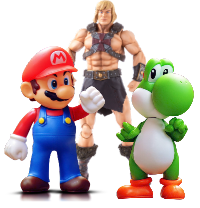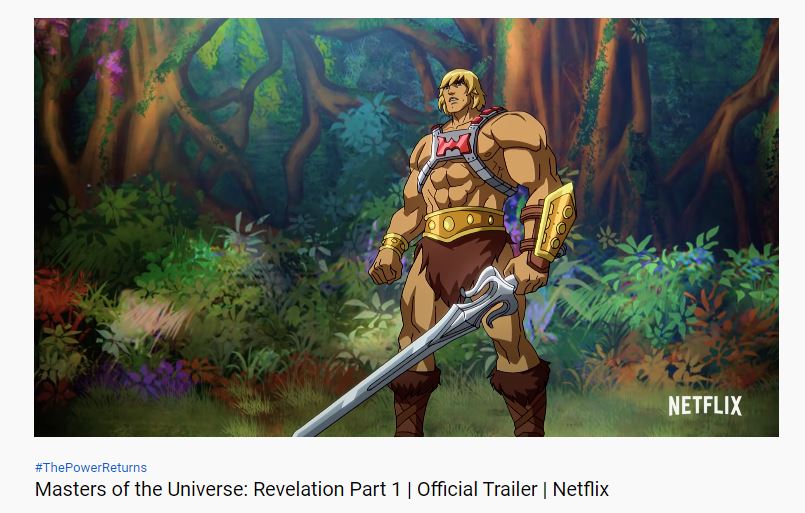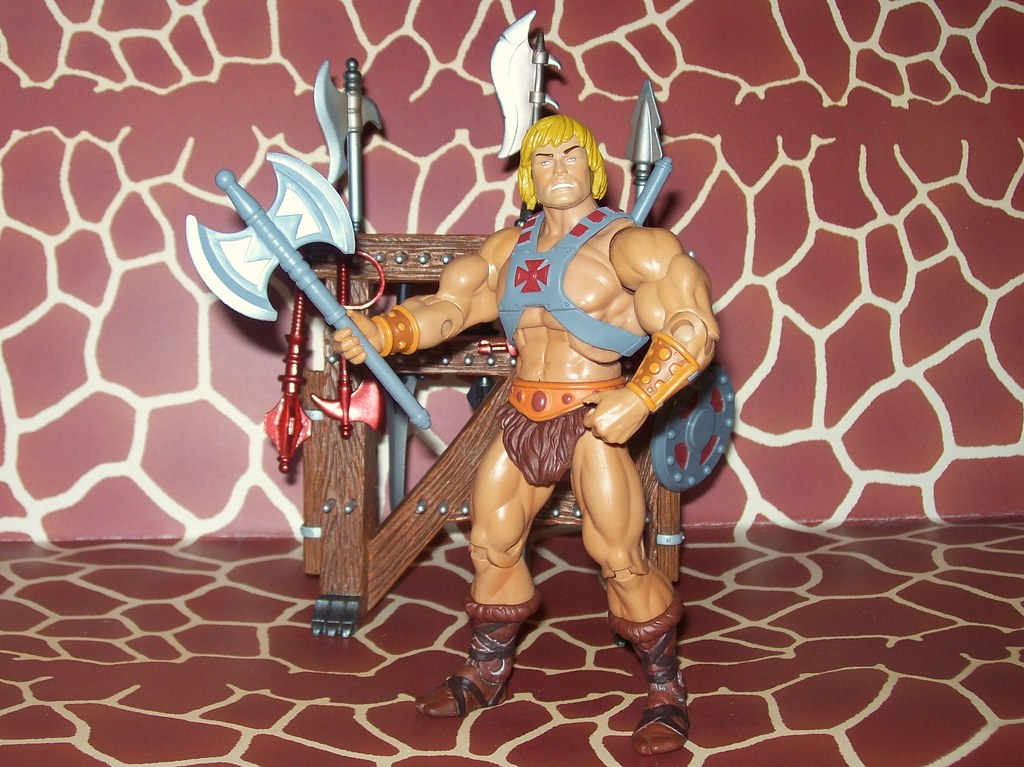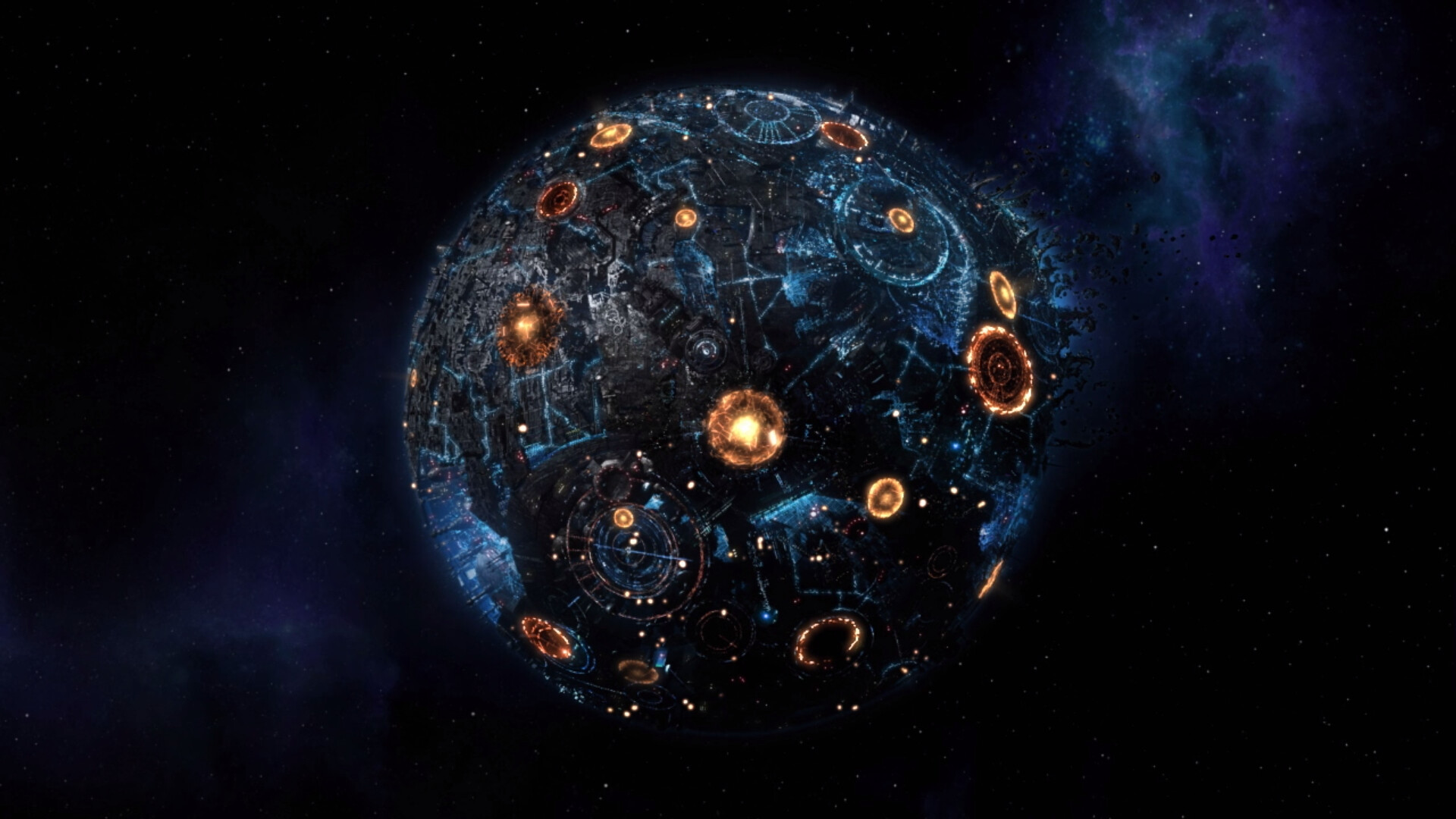Before you had your standard home consoles and the Big 3 (PlayStation, Xbox, and Nintendo) of the video game industry, there were the arcades. Filled with soda-guzzling teens and the sound of crunchy carpeting, arcades were the place to be for the young and curious alike until the rise of computer games and console games, leaving arcade owners stranded in the wake of the ’90s and a large shift in the gaming industry.
However, this isn’t to discount the legacy of arcade games. While there are some who may not have the experience of dealing with sticky joysticks and jamming pocketful of quarters into the most popular machines, arcade games played a vital role in the gaming industry and many fan favorites were eventually ported to home consoles.
In this guide to ‘80s games, we memorialize the most impactful games found in ‘80s arcades and where our favorite franchises stand today
Pac-Man Arcade Game
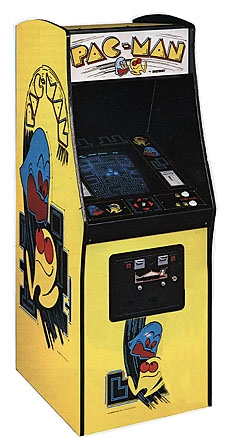
Pac-Man is considered one of the most well-known ‘80s arcade games, living robustly through pop culture references. The gameplay is relatively simple: the player works through a variety of levels, collecting coins while keeping Pac-Man away from ghosts. This game is still widely popular today and almost every digital device has a version of this game. However, never fear for those who prefer the old school arcade-style; various entertainment centers such as Dave and Busters still feature Pac-Man machines.
Donkey Kong Arcade Game
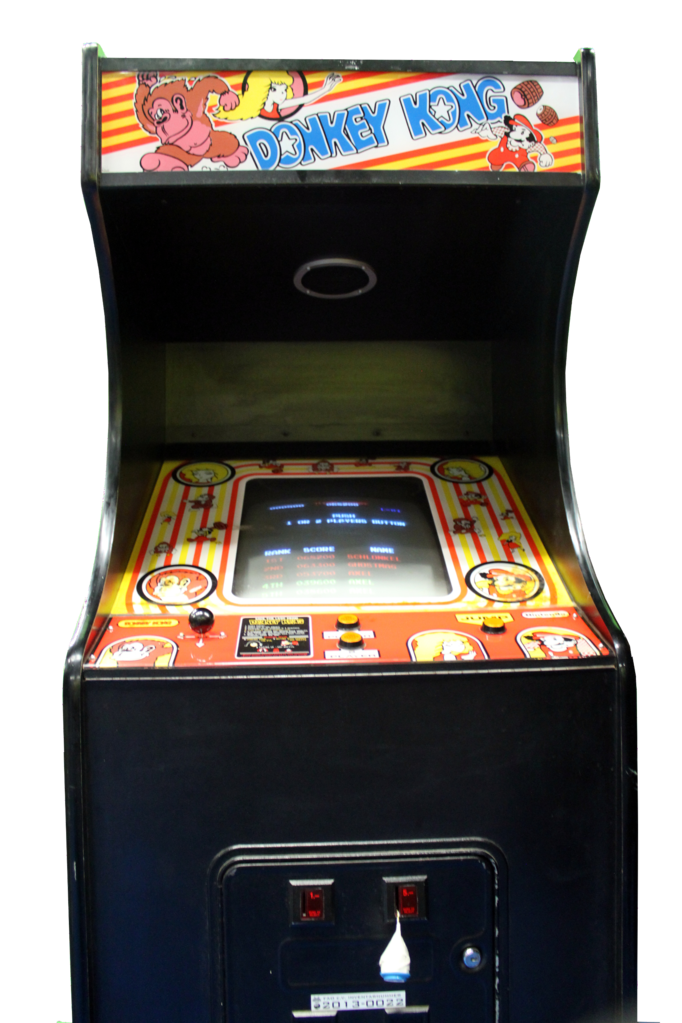
Released by nintendo in 1981, Donkey Kong was a platformer game focused more on overcoming a series of obstacles. In this case, Mario is endangered with the task of rescuing his girlfriend Pauline from Donkey Kong’s clutches while avoiding barrels thrown by the gorilla. Despite nintendo America’s initial concerns, this arcade game excelled, becoming one of the best-selling machines of the decade. One special feature distinctive to this game was the inclusion of characterization in the form of cut scenes and a tangible storyline—no doubt setting a precedent for similar games under nintendo’s production. From the Game Boy to the 3DS, Donkey Kong has seen a game on every nintendo console platform, and its most recent release in 2014, Donkey Kong Country: Tropical Freeze, was for the now discontinued Wii U.
Space Invaders Arcade Game
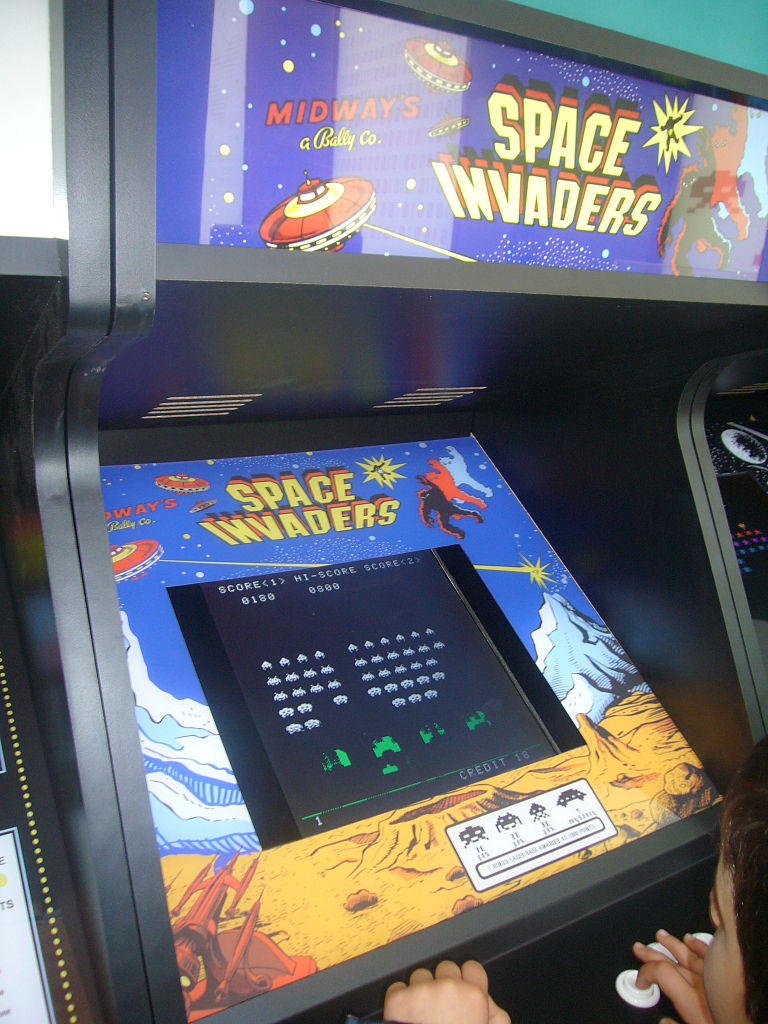
Considered the penultimate ‘80s game, Space Invaders was a revolutionary addition to the gaming frontier—not only did it expand the potential of arcade game industry but it also became the template for shoot ’em up games. The game was so popular that purportedly Japan had a 100-yen coin crisis. (Their coin equivalent to the quarter for playing one round of an arcade game.) The premise of this game was simple: destroy wave after wave of aliens descending upon the world and try to obtain the most number of points possible.
While Space Invaders is more of a nostalgic memory than an active household name, it did have a history of being ported to a variety of consoles, such as the DS and PSP. It was last seen available as a Wii Ware game on the Wii, but given its undying popularity and pop culture status, we won’t be seeing its demise anytime soon.
Frogger Arcade Game
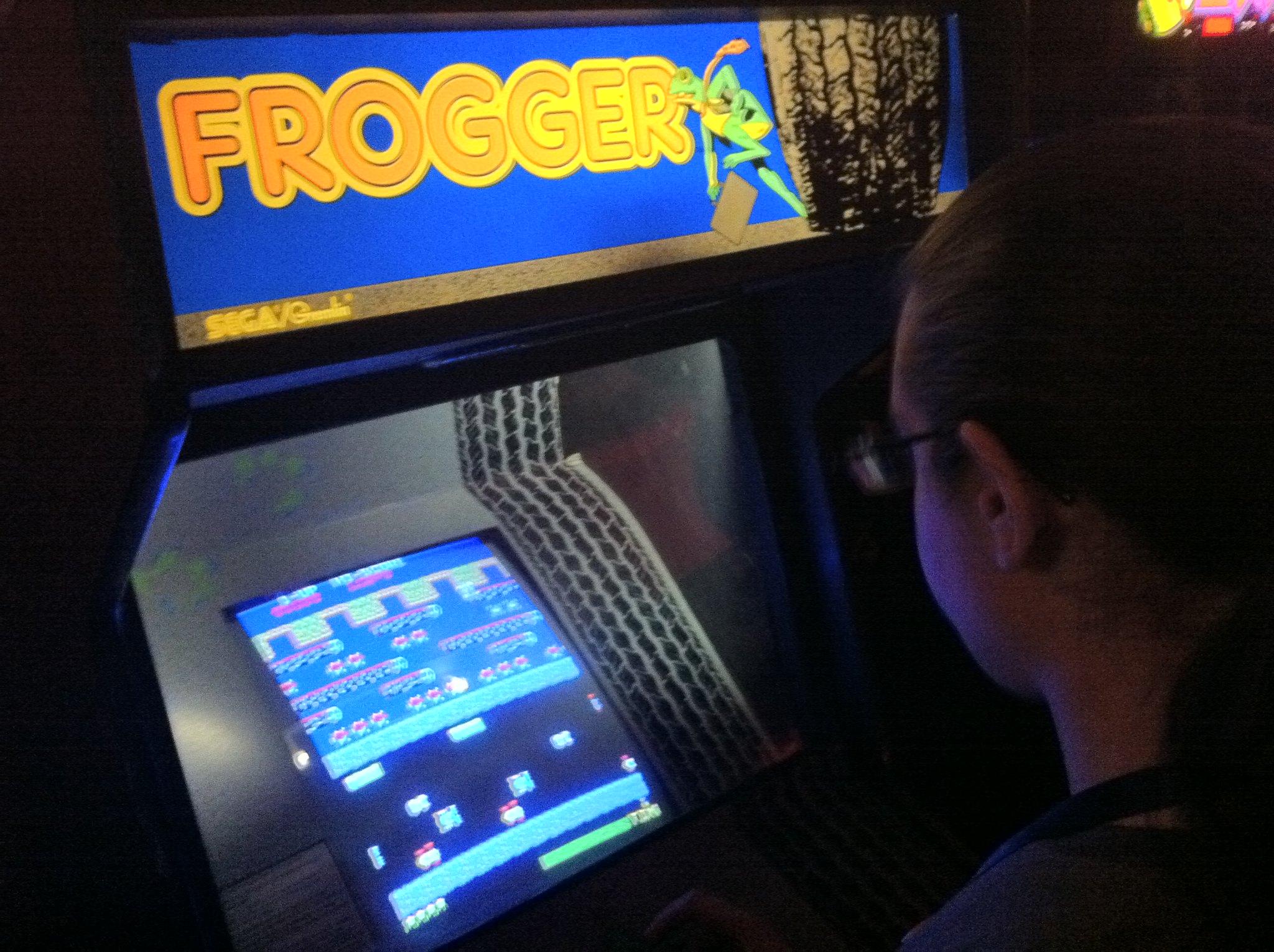
Before you had Crossy Road, there was Frogger in the early ’80s. Released by Konami and later acquired by Sega, the basic objective for Frogger is to help lone frogs cross a road brimming with a variety of obstacles. The game became infamous for having a multitude of ways to die, including but not limited to crashing with a vehicle, running into natural predators such as snakes, as well as simply running out of time. As players progressed through the levels, the amount of time given to guide a frog back home was also gradually shortened. Even though it’s been over three decades since this game was released, players today can still enjoy (or not) the challenge of Frogger through a variety of ports, such as the PlayStation 3 and the 3DS with Frogger Returns and Frogger 3D.
Galaga Arcade Game
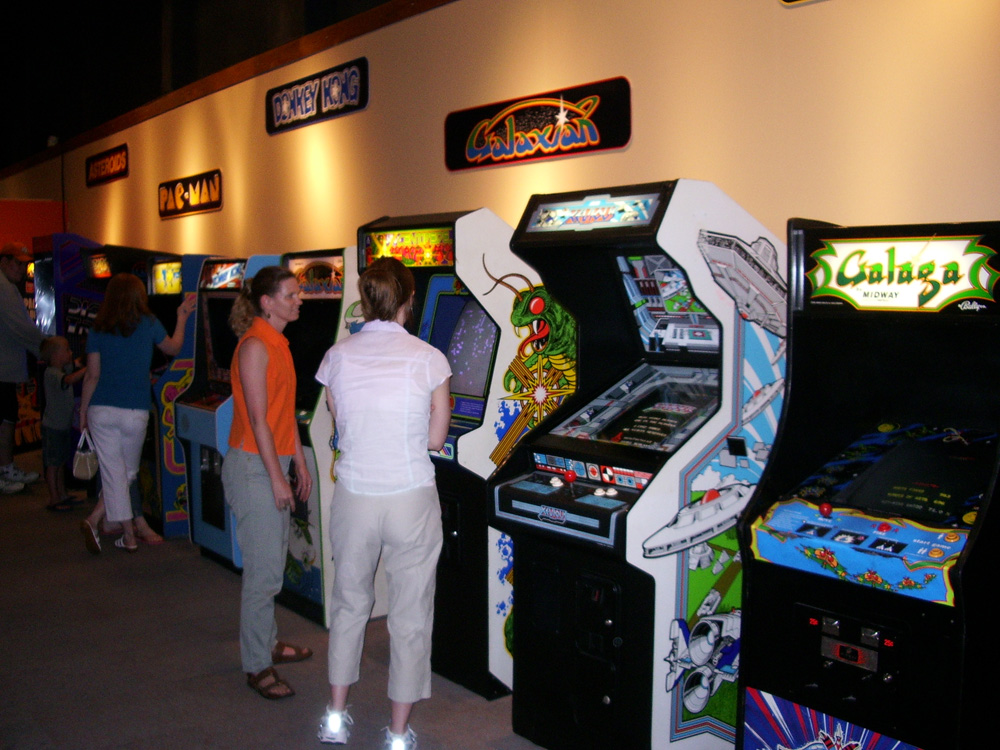
Another fixed shooter game, Galaga is actually a sequel to a previous game called Galaxian produced by Namco, which was also a big hit in its own right. In Galaga, players are tasked with the mission to prevent Galagan forces from invading Earth; not only did players have to dodge fighters coming from the top and side of the screen, but players could also capture enemy ships for power-ups. Galaga would even end up with a sequel called Gaplus, and today old and newer players alike can enjoy this shoot ’em up on a variety of platforms such as iOS and the nintendo 3DS with Galaga 30th Collection and Galaga 3D Impact.
Tetris Arcade Game
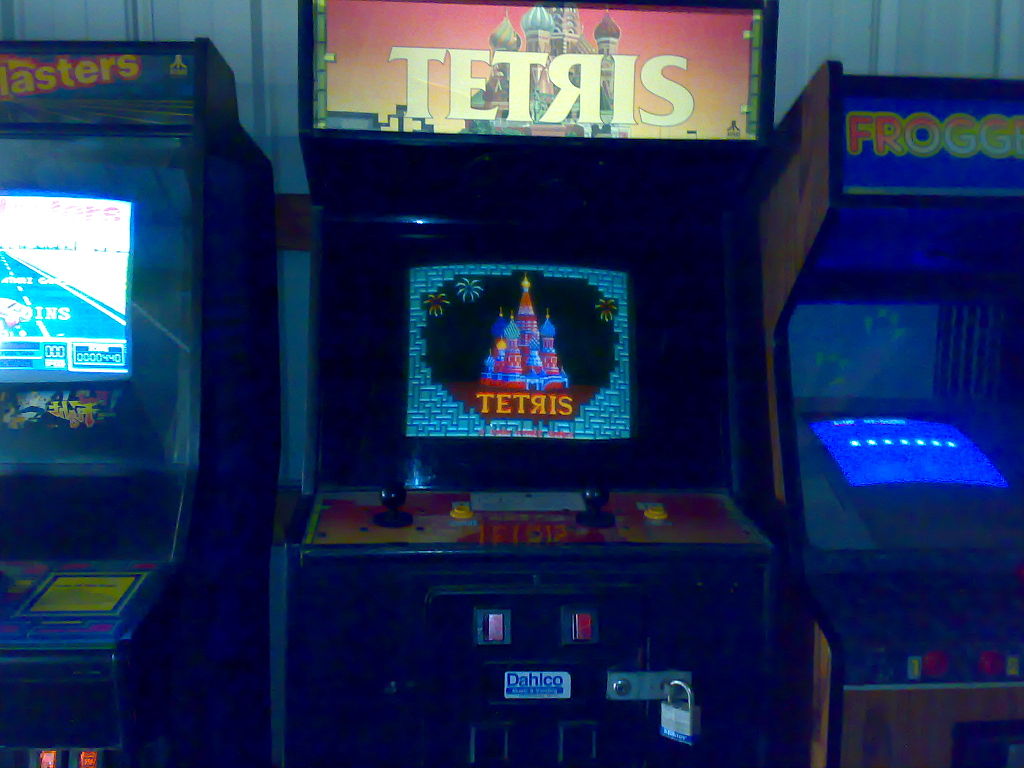
While this Russian puzzle game had humble origins, Tetris would grow to become a worldwide phenomenon, selling over 150 million copies and becoming the world’s most sold game in history. The basic layout for this puzzle game is to stack up different shapes and clear them by filling a line. Given its straightforward gameplay and streamlined design, this is no surprise to any veteran or newbie gamer. Before Tetris would hit its peak popularity in 1989, with its port to nintendo’s first Game Boy console, Tetris was a computer-game-turned-arcade game in 1988. Its Atari version has also become a well-coveted collector’s item due to only 100,000 copies being sold in the midst of a copyright dispute with nintendo.
Not surprisingly, Tetris is available on most platforms, with the more recent Tetris 99 for nintendo Switch gaining a large following and competition-focused fanbase.
Asteroids Arcade Game
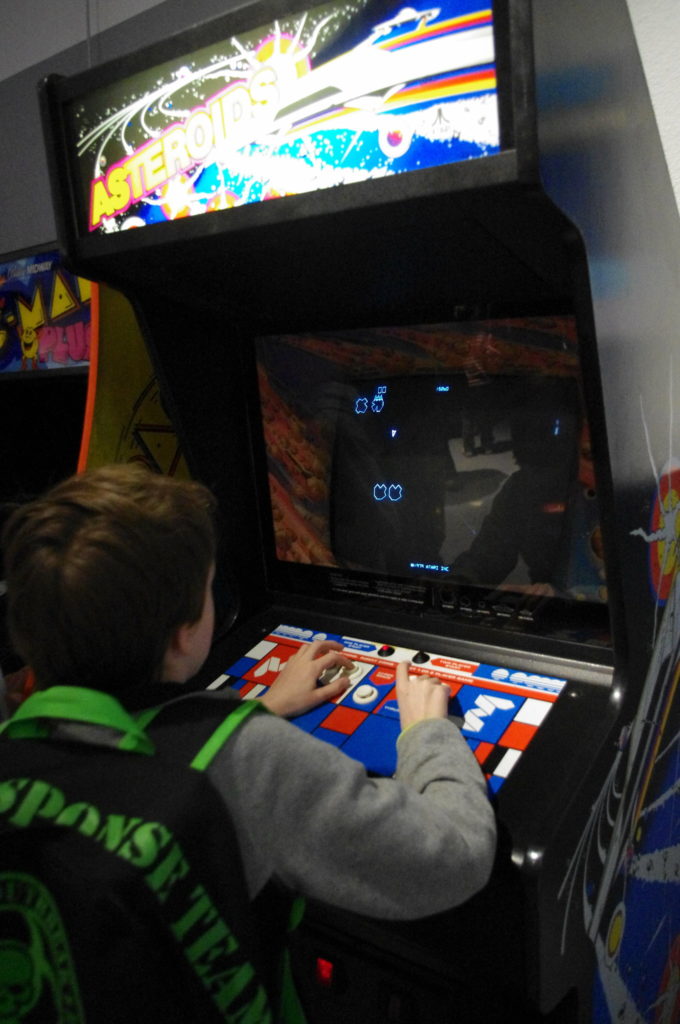
While technically released in 1979, Asteroids’ popularity would lead it to be a defining arcade game for the ’80s as well as a port to Atari’s home consoles. In Asteroids, players control a spaceship drifting through a sea of asteroids—not only do players have to avoid and destroy any incoming asteroids, but they also have to stave off saucers and dodge their counterattacks. While the game has been resurfaced as a retro throwback for a variety of consoles, such as the PlayStation 2 and Xbox 360, its last release was for an Atari’s Greatest Hits pack for the nintendo DS; sadly, the arcade game would never see a peak like it did in the ‘80s.
Centipede Arcade Game
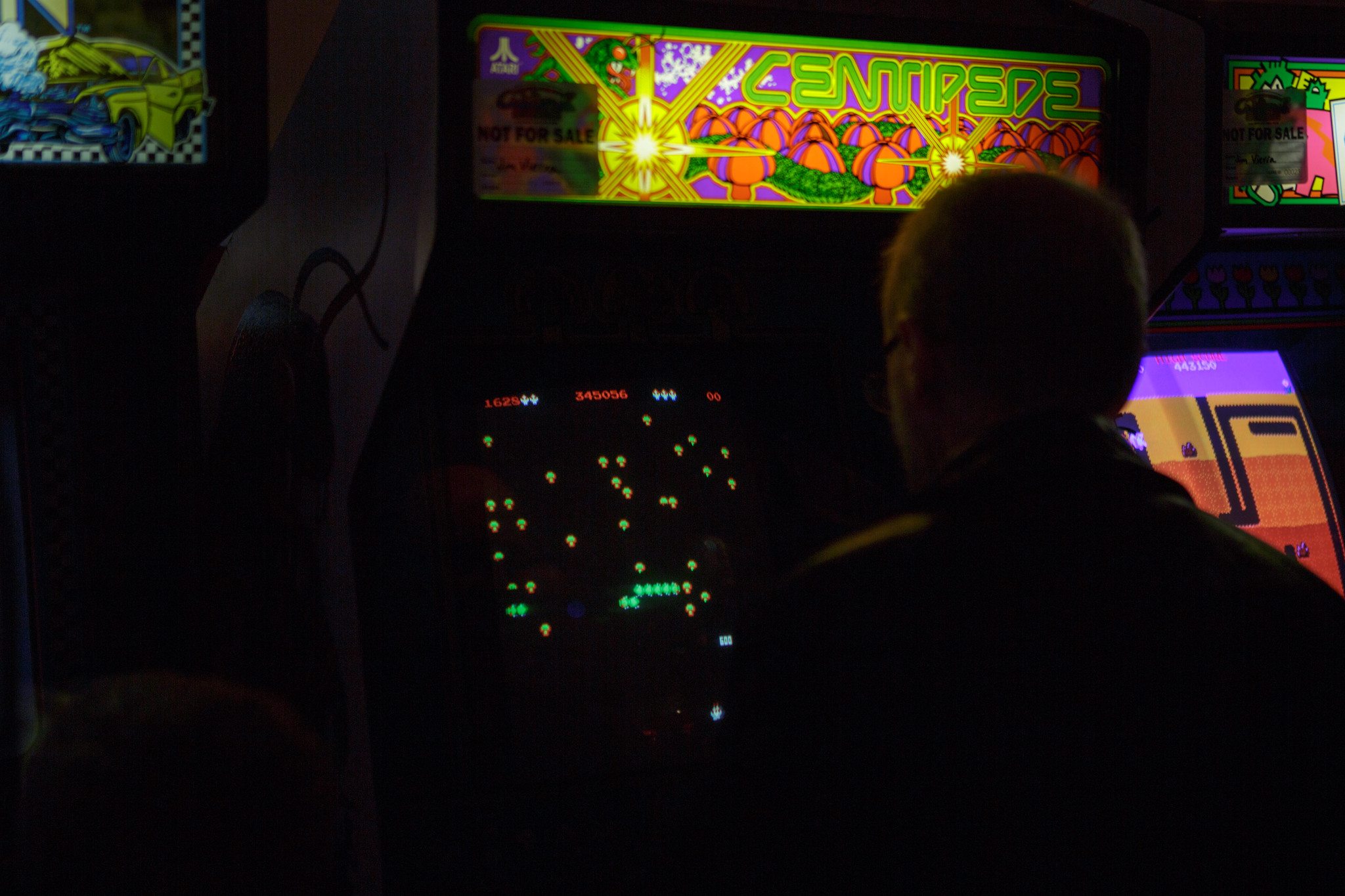
With one of the more fantastical backgrounds, Centipede has you in the role of a garden gnome who must defend their forest with a magic wand from an invasive horde of arachnids and insects—spiders, scorpions, fleas, and of course, a centipede which winds down the screen near the end of every level. Released in 1981 by Atari, Centipede would be one of the few games programmed with no specific gender-demographic target—it would go on to be one of the most played arcade games among women gamers with Pac-Man coming in second. Like many ‘80s arcade games, Centipede would see short-lived popularity after being ported to Atari, and in succeeding years, it would go on to be ported to a variety of home consoles as well as made available on mobile devices.
Rally-X Arcade Game
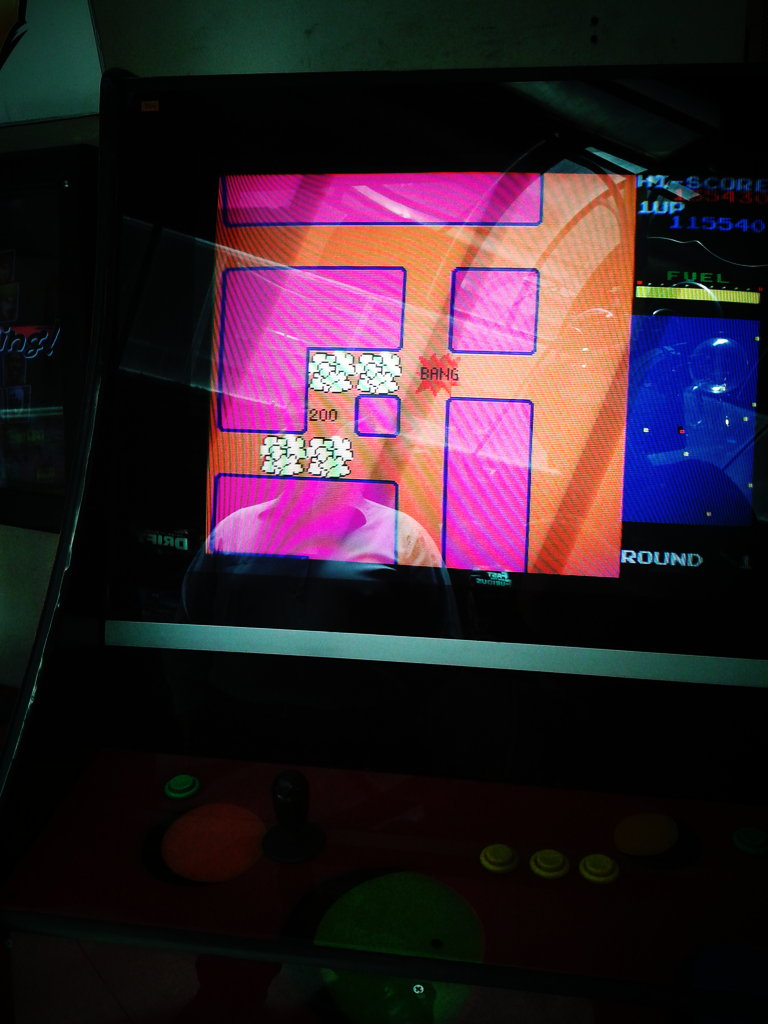
The first racing game released in the 1980s by Namco, Rally-X was also one of the first arcade games produced in Japan that Namco imported over to the US. While it wasn’t as popular as other ‘80s-defining games such as Pac-Man, Rally-X would receive sequels as well as ports to Namco’s home consoles. Compared to your average racing game, rather than racing against other players or a CPU, Rally-X had players collect flags around a maze-like course. While we haven’t seen a direct Rally-X sequel since New Rally-X, the game has been available to play on the Wii’s Namco Museum Remix as well as on the iOS platform as Rally-X Rumble.
Street Fighter Arcade Game
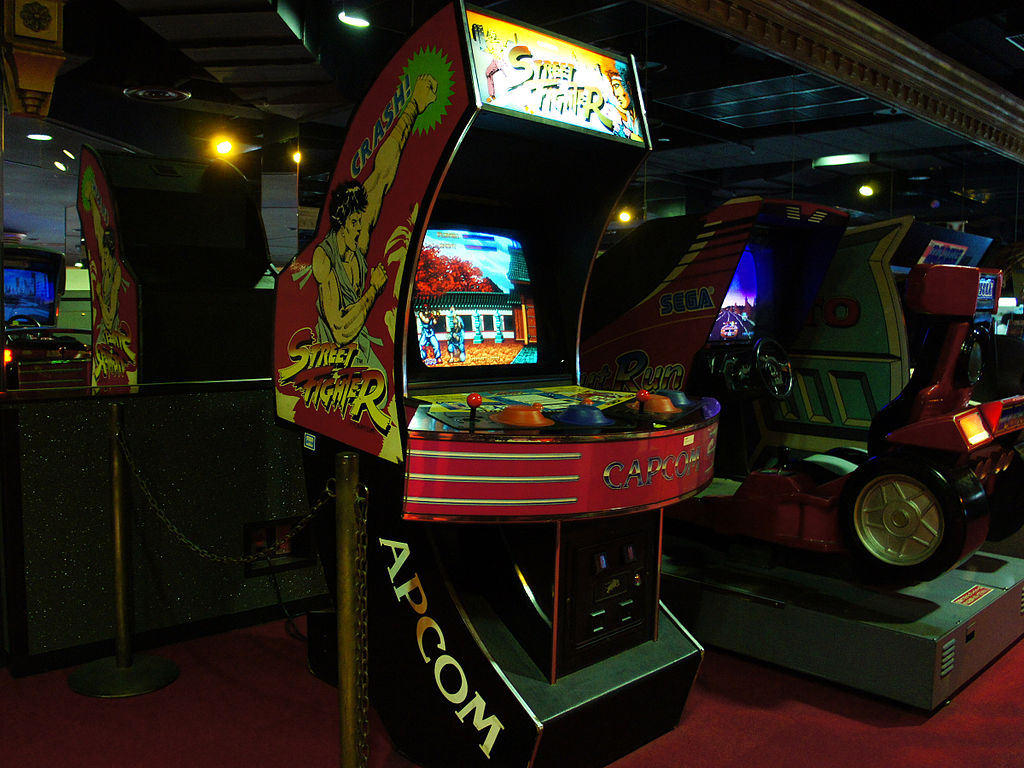
The inaugural game to the Street Fighter franchise, Street Fighter would be the first competitive fighting game released by Capcom in 1987. In single-player mode, players take control of a young Japanese martial artist named Ryu against eight different CPU-controlled enemies, but in 2-player mode, players could play as either Ryu or his rival, Ken. Truthfully, Street Fighter was never as popular as its sequel, Street Fighter II, but without some of its introduced conventions, we wouldn’t have the Street Fighter we know and love today. Even now diehard fans and newer players can enjoy the popular fighting series, as Street Fighter V was just released in 2016 for PlayStation 4 and Windows.
Final Fight Arcade Game
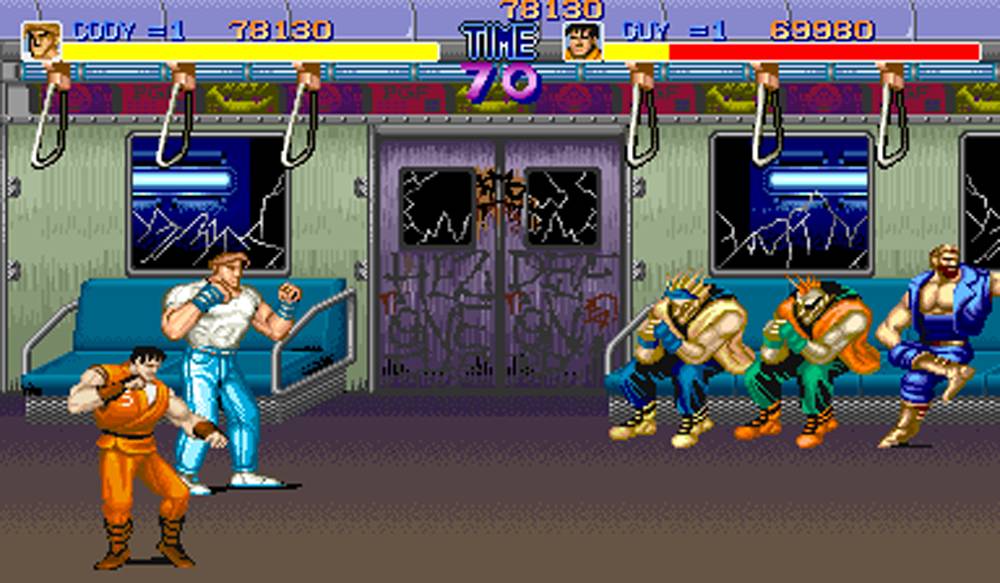
Considered a cousin of the Street Fighter series, Final Fight was originally developed as a sequel to the beloved Street Fighter franchise when things took a hard left turn—instead of a one-vs-one arcade game, players got a side-scrolling beat ’em up. Final Fight would go on to see action on the SNES and the Gameboy Advance, eventually memorialized in the Capcom Classics Collection. Particularly in the ’80s, once ported to the home consoles and to the US, the game underwent a fair amount of censorship, with blood spatters minimized alcoholic references wiped off, and even two female characters replaced with two male characters due to concerns that players would protest punching female characters. (Given later press releases that one of the female characters was male, this would lead to much debate between fans and game media outlets about a specific character’s gender identity.)
Even if longtime fans don’t have as much access to retro arcades anymore, Final Fight can still be enjoyed along with other vintage fighting games in Capcom’s most recent Capcom Beat ‘Em Up Bundle for the PlayStation 4, Xbox One, nintendo Switch, and Windows.
Joust Arcade Game
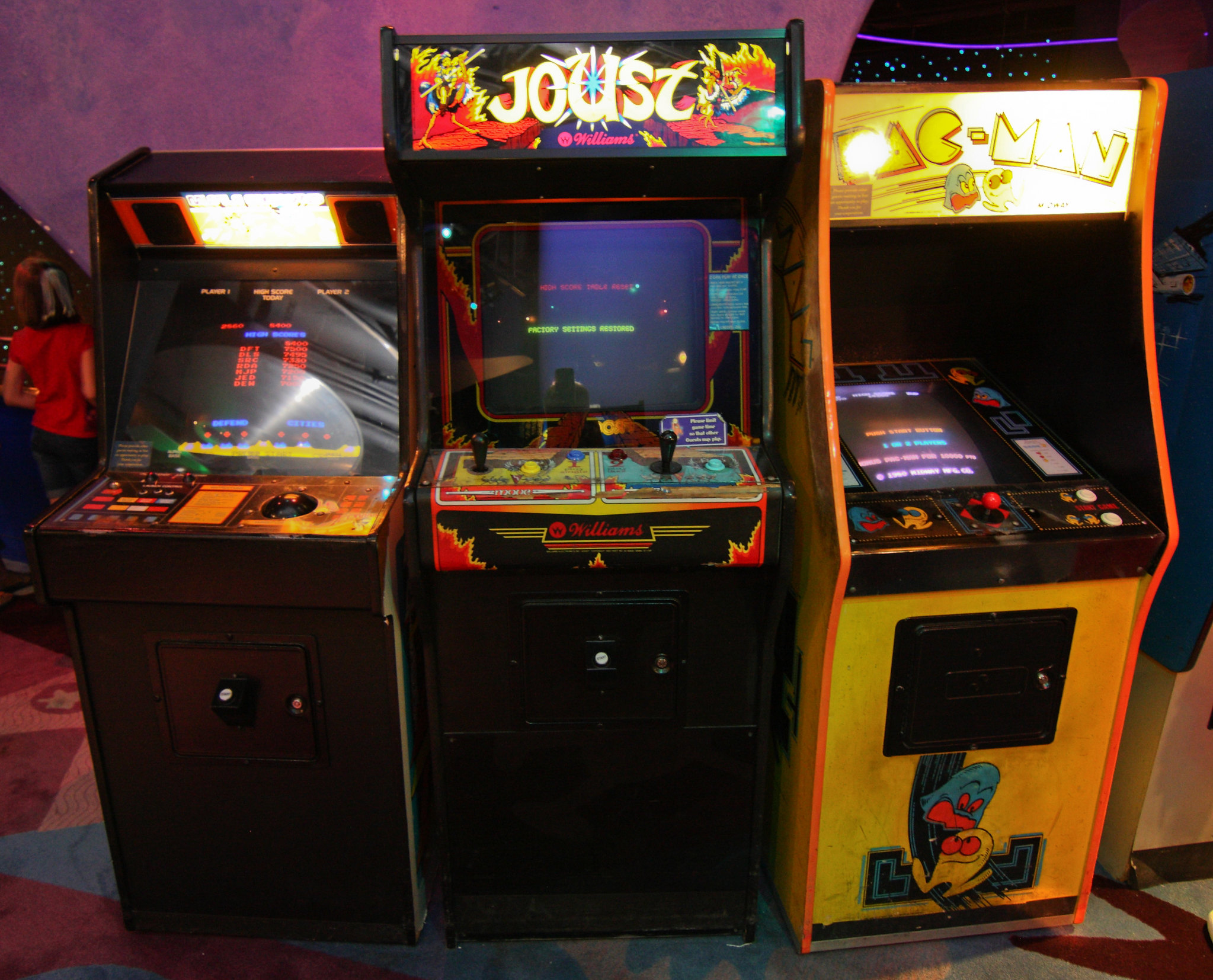
Armed with only a lance and a flying ostrich, players focus on defeating hordes of buzzard-riding knights while avoiding an indestructible pterodactyl in Joust. One of the few arcade games to tout itself as a co-op, second players can join in on the fun as a knight riding on a stork. Joust was well-praised for its captivating visuals and intuitive gameplay and would serve to inspire the co-op characteristics of the Mario Bros arcade game, though unfortunately, it would only live to see an arcade sequel despite its developers’ efforts to port it to the nintendo 64 and the Gameboy Advance. However, this arcade game is available on mobile devices for those who want a trip to memory lane or for those who are curious.
Mario Bros Arcade Game
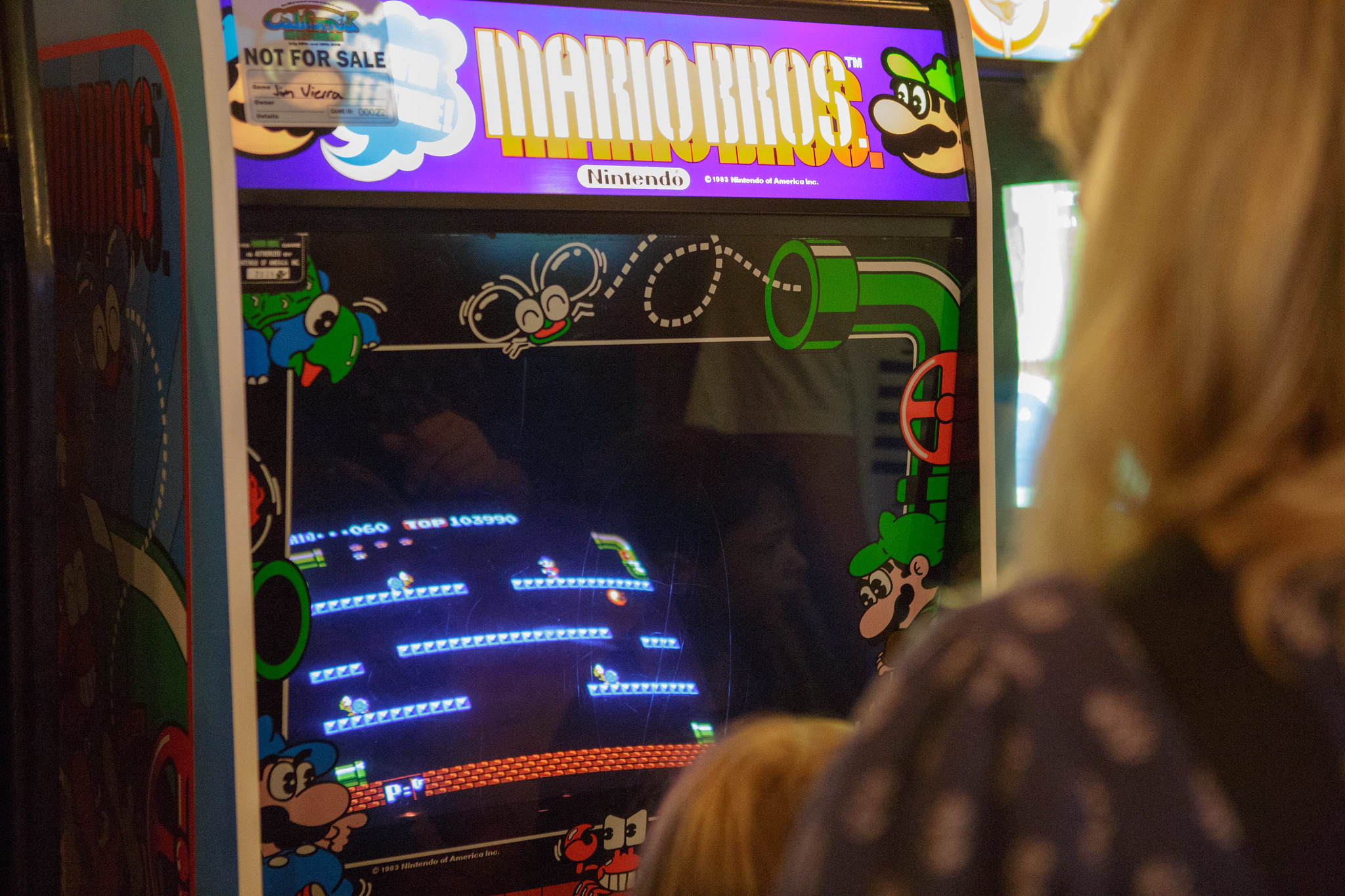
Not to be confused with Super Mario Bros, which was published in 1985, Mario Bros was published for arcade games in 1983 by nintendo. Developed by Miyamoto, who also worked on Donkey Kong, the initial challenges met which would later become Super Mario franchise conventions were figuring out Mario’s bounce and the mechanics to defeat an enemy. It is with the development of this game that Mario also got his signature name—though Mario’s name was once Jumpman, the plumber had a lucky turn of fate when the nintendo of America staff were accosted for rent by their landlord at the time, Mario Segale, and decided to name our plumber-protagonist Mario. Given its success with the arcades and in its succeeding ports, Mario Bros. can still be played today, with the newest release Super Mario Maker 2, released in the summer of 2019, for the nintendo Switch.
Zaxxon Arcade Game

The first arcade game to appear on a live television commercial, Zaxxon is an isometric shooter where players pilot a space ship through two space fortresses, evading enemy fire while taking down enemy gun turrets, ships, and even fuel cans to keep ongoing. Different factors help in giving Zaxxon a more 3-D effect, such as a shadow beneath the ship which shows its approximate height. While Zaxxon was ported to Sega and Atari home consoles, modern gamers can still experience the game via Sonic’s Ultimate Genesis Collection, available on the Xbox 360 and the PlayStation 3. The arcade version was also made available on the Wii’s Virtual Console near the end of the 2000s. If players prefer playing it while on the go, a 2012 version dubbed Zaxxon’s Escape is available for Android and iOS, though it has faced severe criticism for derailing from the original.



